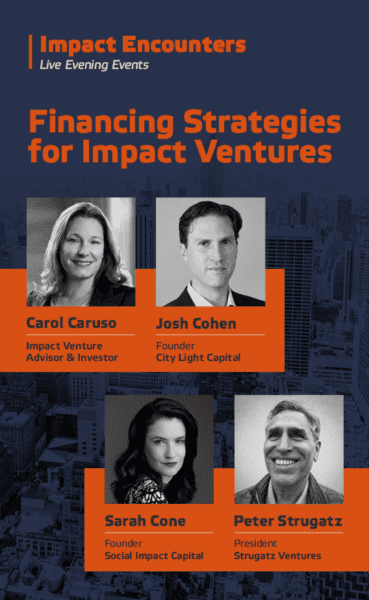Art is Everything
The economic and social impact of creative ventures

Throughout history, human progress depends on new ways of organizing enabled by emerging technological innovations. Rethinking Humanity summarizes this coevolutionary dynamic:
“History indicates that leading civilizations have evolved ever-greater organizational capabilities in tandem with increased technological capabilities. While the technological capabilities dictate the potential of any civilization, the Organizing System determines how close to this potential a society can get.”
A key question for the social impact movement is to ask what the best organizing systems are to achieve our regenerative potential with emerging platform ecosystems.
A society’s organizing system includes its institutions and governing structures, driven by its culture, beliefs, values, and intentions.
Currently, the dominant private sector organizing system is based on the necessity of endless growth of profits. This system focuses on the efficiency of shareholder value creation despite requiring continuous resource extraction that stresses the capacities of the planet. Its governing structures are highly centralized and controlled by majority shareholders. It incentivizes competition and capital accumulation and constrains the ability to bring about a sustainable future.
Over several decades, more companies have slowly transitioned away from an intent focused solely on profit towards more sustainable approaches that seek more long-term environmental and social value. Most sustainability programs today focus on making company products, operations, and supply chains less harmful to the environment. CSR-oriented approaches involve companies investing in programs that reduce emissions, increase energy efficiency, or support community development. While beneficial, these programs are still embedded within a traditional corporate organizing system and profit-maximizing paradigm. Most companies prioritize sustainability programs that reduce costs, and most are unwilling to make significant financial or profit maximization compromises to reduce material and energy extraction that stresses the capacities of the planet or that minimize negative impacts on the environment and society.

Regenerative ecosystems are an emerging alternative organizing system, based on the intent to create the things we need within the limitations of the Earth’s ability to regenerate resources. A regenerative intent focuses on new ways of organizing that restore our degraded environment, create social equity, and enable people to live in balance with the Earth’s natural resource cycles. A regenerative intent goes beyond being purpose-driven and socially conscious within our current structures and systems. It seeks to evolve our organizing system so that the private, public, and social sectors operate interdependently and in harmony with our planet and create opportunities for all stakeholders to participate in the ecosystem equitably.
A regenerative organizing system fundamentally challenges the underlying institutions, governance, and culture that dominate the world today.
Over the past two decades, a fusion of technologies has emerged, encompassing ubiquitous mobile, cloud, and communication systems that enable businesses of any size to connect with individuals across the globe, at any time. This accessibility has facilitated entry into new markets and spurred the generation of network effects among communities, which collaborate on shared goals and co-create products and services. Today, these technological advancements have culminated in platform ecosystems, which serve as the predominant means of value creation.
Platform ecosystems use technologies to build communities of individuals and entities that share a common social or economic purpose. They typically offer a combination of benefits to users, developers, and partners, including:
Thriving platform ecosystems attract more developers, users, and partners to the platform, driving value and opportunity, which can in turn lead to more innovation and growth for the community.
A key question for the social impact movement is to ask what the best organizing systems are to achieve our regenerative potential with emerging platform ecosystems.
Not all platform ecosystems are centralized. While many platform ecosystems are built and operated by a single company, there are also decentralized platform ecosystems that are built on top of blockchain technology and are governed by a decentralized network of participants. In a decentralized platform ecosystem, the platform is not owned or controlled by a single entity but rather by the network of participants who contribute to its operation and governance. These participants may include developers, users, validators, and other stakeholders who are incentivized to contribute to the ecosystem and maintain its integrity.
Decentralized movements that distribute wealth are taking shape — examples include the sharing economy, platforms that create microenterprises, venture networks, communities, and Web 3 decentralized autonomous organizations.
Regenerative platform ecosystems use the power of platform ecosystems to build communities of individuals and entities with a common regenerative intent to live in balance with the Earth’s natural resource cycles. They are based on a culture of creating the things we need within the limitations of the Earth’s ability to regenerate. They challenge the dominant organizing system by changing the funding, ownership, and governing structures that incentivize people to participate in the ecosystem.
A regenerative intent goes beyond being purpose-driven and socially conscious within our current structures and systems.
Regenerative platform ecosystems emphasize open access, participation, and sharing via resource and knowledge commons. They prioritize the health of all participants, including workers, users, and local communities, by maximizing the circulation of value among participants and minimizing value extraction to passive investors.
They focus on local contexts and distribute decisions and ownership to participants to promote diversity and create contextual adaptability and resilience. They are built on principles of circular economy, where resources are kept in use for as long as possible, waste is minimized, and natural systems are regenerated.

Regenerative platform ecosystems are a promising approach for the regenerative movement to scale positive social and environmental impact while also generating economic value and growth for their participants.
Regenerative platform ecosystems challenge the economic systems, structures, and institutions that limit the effectiveness of traditional sustainability approaches. They are intentionally designed to be non-extractive and to protect against value/wealth concentration with founders and passive investors. They offer the possibility of recognizing new forms of holistic value, new bioregional boundaries for interactions, and new ways of self-organizing based on a culture of mutualism and cooperation.
Our community and networks are exploring the emerging areas of sharing economies, Web3, decentralized autonomous organizations, microenterprise platforms, cryptocurrencies, and venture networks, to name a few.
Impact entrepreneurs who are looking to scale their impact can ask themselves three questions:
Related Content
Comments
Deep Dives
RECENT
Editor's Picks
Webinars

Featuring
Lizz Welch & Jennifer Roglà
iDE
May 16 - 12:00 PM EST

Impact Encounters
May 22 - 6:30 PM EST
News & Events
Subscribe to our newsletter to receive updates about new Magazine content and upcoming webinars, deep dives, and events.
Become a Premium Member to access the full library of webinars and deep dives, exclusive membership portal, member directory, message board, and curated live chats.
0 Comments